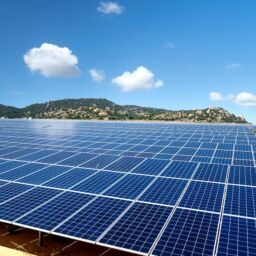
As America moves towards a cleaner energy future, the bottleneck of interconnection projects waiting to join the US grid has swelled by 40%, exceeding the capacity of the country’s entire power plant infrastructure. Researchers at the Lawrence Berkeley National Laboratory (LBNL) have revealed that the vast majority of queued capacity (95%) consists of zero-carbon energy projects, with solar and battery storage making up 80% of new additions in 2022.
The California Independent System Operator and the PJM Interconnection, two leading regional transmission organizations, experienced fewer applications for interconnection last year. The reason for the slowdown was a series of reform efforts that have temporarily halted project intake.
The Inflation Reduction Act (IRA) is partly responsible for the uptick in clean energy projects in the interconnection queues, said LBNL energy policy expert Joe Rand. The act was passed midway through 2022 and is expected to continue encouraging growth in renewable energy development.
However, projects aren’t leaving the queues at the same pace as new entries. In 2022, interconnection wait times averaged five years, an increase from the four-year average observed between 2018 and 2022. Moreover, less than a quarter of the projects that entered the queue from 2000 to 2017 have been completed by the end of 2022, as per Berkeley Lab data.
Interconnection queue lengths are now considered the primary obstacle to renewable energy deployment, said Rand. The silver lining is that interconnection queues have garnered the attention of regulators, with two open dockets at the Federal Energy Regulatory Commission (FERC) focused on transmission planning and procedural reform.
Grid-enhancing technologies could potentially alleviate the interconnection delays. However, a core issue remains the lack of transmission infrastructure. Despite regulatory reforms, constructing new transmission lines can take years. In the interim, solutions such as power flow control devices and dynamic line readings may expedite the process of integrating more projects onto the grid.
The Brattle Group’s case study for the WATT Coalition, an organization promoting grid-enhancing technologies, suggested that upgrading existing transmission lines with advanced technologies could effectively double grid capacity in Kansas and Oklahoma by 2025. However, Selker pointed out that the US has insufficient incentives for adopting grid-enhancing technologies, making transmission owners reluctant to utilize them.
Clearing interconnection queues will not happen overnight, even with new incentives and reforms, Rand admitted. The first signs of progress might appear counterintuitive: as reforms take hold, the number of projects seeking interconnection could decline, as developers no longer feel the need to apply for multiple projects to improve their chances of success.
















